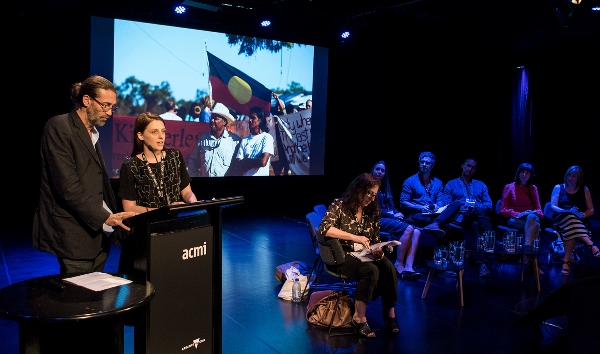At last week’s Australian International Documentary Conference (AIDC), two docos were ‘hacked’ by a team of national and international experts in the impact field, who suggested strategies to maximise each film’s social outreach.
One of those films was The Kimberley Project, currently in pre-production. The feature will explore the threats to remote Aboriginal communities in the Kimberley region from industries such as mining, fracking and agriculture.
Director and producer Nicholas Wrathall (Gore Vidal: The United States of Amensia) told IF the aim of the film was to give voice to the local communities of the region and explain “how this pressure is affecting them, how they’re feeling destabilised from it, and [explore] what their future is with this new interest and development in the area.”
Wrathall first teamed up with producer Stephanie King (Observance), who had been working on other documentary projects in the region, in 2015, after news broke that the Kimberley Land Council was going to the United Nations to appeal their rights following proposed community closures.
“I’d just come back from New York at the time and was looking into different projects here,” said Wrathall. “It just seemed like such a big story that wasn’t really getting any coverage beyond the headlines. So we started investigating it together.”
The producers have spent the last 18 months travelling to the region and prepping the film. The film’s third producer is Steve Kinnane (The Coolbaroo Club), an academic and a Marda Marda from Mirrowoong country in the East Kimberley.
“We’ve taken a long development, because this is a really complex story. It’s not two-sided,” King told IF.
With production investment from Screen Australia, Screenwest and Screen NSW, the team intend to begin the main block of shooting in May.
And while it’s still early days, the film’s impact and outreach campaign has been a priority.
Wrathall said the team has set various goals for what they want to achieve, and will need to decide how those goals are most effectively achieved – i.e. if it works best as a tool for poltiical lobbying or for education – once the film begins to take shape.
Both King and Wrathall agree the AIDC’s Impact Strategy Hack session was a useful forum for them to network and strategise.
One idea that emerged in the sessions was seeding early material through micro-docs to help build an audience for the film before its release.
“We had an early ambition to do that, and we were concerned about time and cost and being distracted by the main film,” said King.
“But I think we’ve been really empowered through this conference to remember how accessible that [kind of content] is on an iPhone. There is this other filmmaking that doesn’t have to be the slick polished feature film, that is accessible and does have a huge impact, sometimes a greater impact, or at least can speak to the bigger film.”
Building relationships with outreach partners could be one way to reach a different audience, Wrathall said.
“Especially with remote communities or even young people that aren’t watching television so much – you’ve got to take the films to them and you’ve got to reach them on the media they’re using.”
One of the strongest messages out of AIDC’s impact sessions was the importance of partnerships and not trying to reinvent the wheel, said King.
“It’s about finding the right partner for the film and then being able to divide and conquer rather than trying to become an expert overnight in these issues,” she said.
“We’re busy making the film,” said Wrathall, “[and] to become the impact producer as well as producing and directing is a big ask. So we need to bring in those people.”
http://www.documentaryaustralia.com.au/films/4065/kimberley-project/



